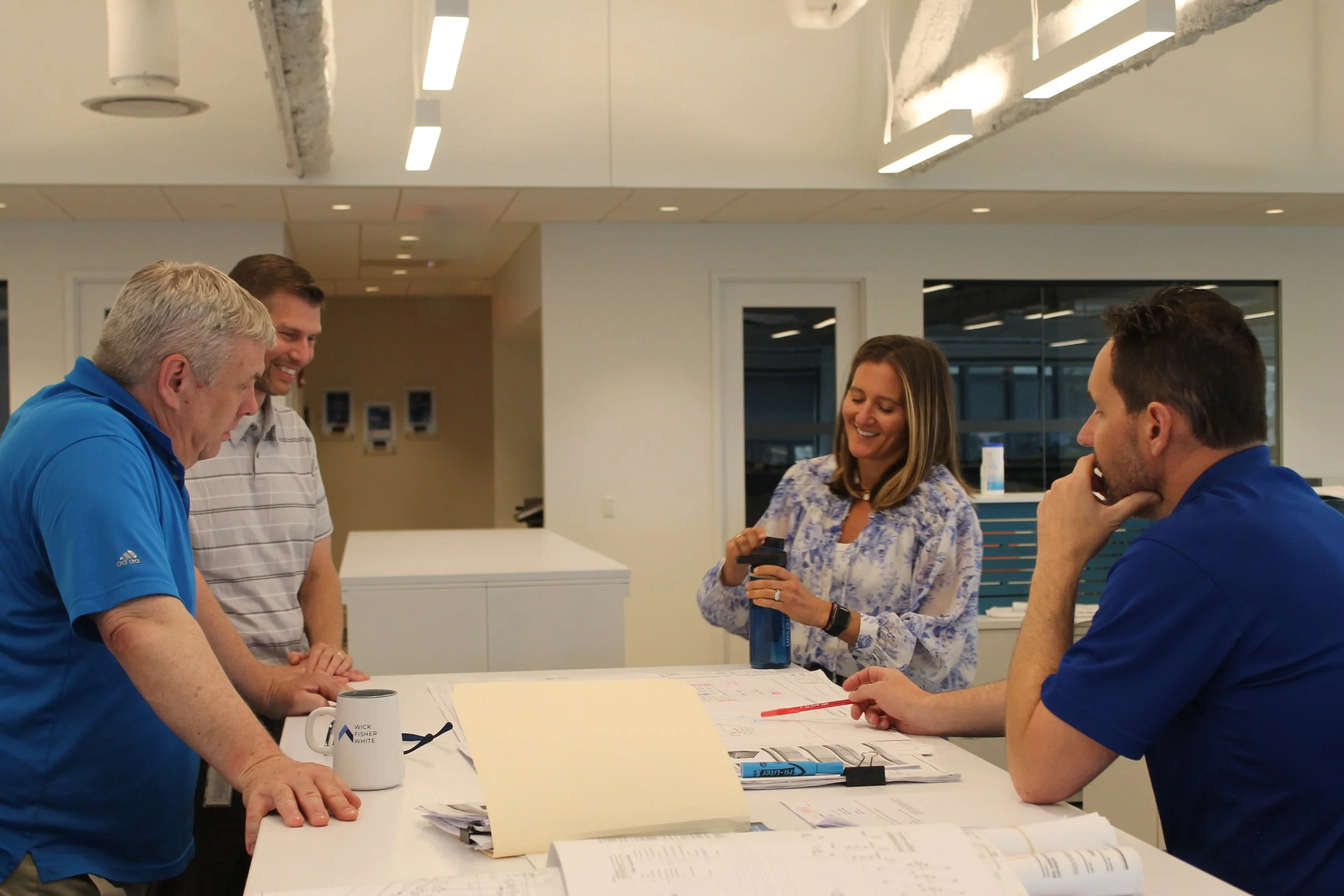Blog Post: The Power of Partnership: How Architects, MEP/FP Engineers, and Cross-Functional Teams Drive Project Success
At Wick Fisher White, we know successful projects aren't just about technical expertise—they’re about how well teams work together. Architects, engineers, contractors, and owners each bring a unique lens, and when those perspectives are aligned early and often, the result is a building that performs as intended, gets delivered on time, and supports the client’s goals.
On paper, collaboration sounds easy. In practice, it takes discipline, responsiveness, and mutual respect. It means speaking up, staying flexible, and solving problems as a team—not in silos. Competing interests, budget pressures, and communication breakdowns can get in the way.
So let’s talk about the unspoken challenges—and how we navigate them.
The Uncomfortable Truths of Project Work
Design Coordination Can Create Tension
In most cases, architects lead the building design. Engineers design the systems that make it work. But when spatial conflicts or system constraints arise, it’s not always clear who makes the final call. These moments can stall progress—or they can be opportunities for real collaboration. We've found it’s most productive to bring clear, well-defined options to the table, outlining the trade-offs for cost, schedule, and performance. That way, the whole team can move forward with eyes wide open and a shared understanding.
Budget Realities Shape Design
Budget constraints are a constant across projects. Value engineering (VE) isn't inherently a bad thing—but how it’s approached can make all the difference. Systems designed purely for cost savings can sometimes lead to issues with comfort, efficiency, or long-term performance. That’s why we aim to design with budget in mind from the start, offering systems that are cost-conscious but durable.
Coordination is an Ongoing Process
No matter how detailed the model or how coordinated the drawings, changes happen—equipment gets swapped, site conditions differ from expectations, ceiling heights shift. Rather than viewing coordination as a task to check off, we treat it as a continuous part of the project. Staying engaged during construction helps the team adapt without losing momentum.
What Successful Collaboration Actually Looks Like
A high-functioning team is more than just a group of skilled individuals—it’s a well-oiled machine built on trust, communication, and shared goals.
Below are a few key qualities that our team strives to incorporate and practice:
Proactive Communication: Team members share information early and often, raising concerns before they become problems.
Clear Roles and Responsibilities: Everyone knows what’s expected of them and respects each other’s expertise.
Mutual Respect: Diverse viewpoints are welcomed. Disagreements are handled constructively with the project’s best interest in mind.
Shared Ownership: Each member feels accountable for the success of the entire project.
Flexibility and Adaptability: Plans evolve, and the team adjusts quickly without losing momentum.
Trust and Transparency: Decisions and challenges are openly communicated.
Timely Decision-Making: The team understands when it’s time to move forward and makes informed decisions without delay.
When these qualities come together, the team moves as one—solving problems efficiently, reducing risks, and delivering results everyone can be proud of.
Case Study: A Multi-Phase Office Transformation for a Confidential Financial Services Client
One example of these principles in action is our ongoing partnership with a confidential financial services client on a multi-phase renovation of a 360,000 square foot commercial office building. The project spans five major construction phases, transforming a former corporate campus into a modern, collaborative workplace environment designed for full client occupancy.
The scope of work includes everything from open-plan office space and technology upgrades to amenity improvements like a fitness center, food service areas, and electric vehicle charging stations. Each phase has required close coordination between the architectural, MEP/FP, and telecom teams—especially as construction progresses floor-by-floor, wing-by-wing, while portions of the building remain occupied and operational.
In the first two phases, we supported the renovation and fit-out of three upper floors, introducing new HVAC and lighting controls, upgraded IDF rooms, and modernized collaboration spaces. The next phases tackle cafeteria and kitchen improvements, new tech hubs, extensive office renovations, and site-wide infrastructure upgrades including guard stations, parking garage lighting, and EV stations.
The phased nature of the project has demanded a high level of flexibility, real-time communication, and an unwavering commitment to teamwork. From navigating infrastructure limitations to adapting designs in response to shifting occupancy schedules, every challenge has been met with a collaborative mindset.
The Foundation of Lasting Success: Partnership Beyond Expertise
At Wick Fisher White, we believe that true project success emerges not from isolated expertise, but from the strength of partnership. When architects, MEP/FP engineers, and all cross-functional team members commit to open communication, mutual respect, and shared ownership, challenges become opportunities and visions turn into reality.
It’s this collaborative effort—grounded in trust, flexibility, and proactive coordination—that transforms complex projects into lasting successes. Because at the end of the day, it’s not just about building structures—it’s about building relationships that deliver exceptional outcomes for our clients and communities.


